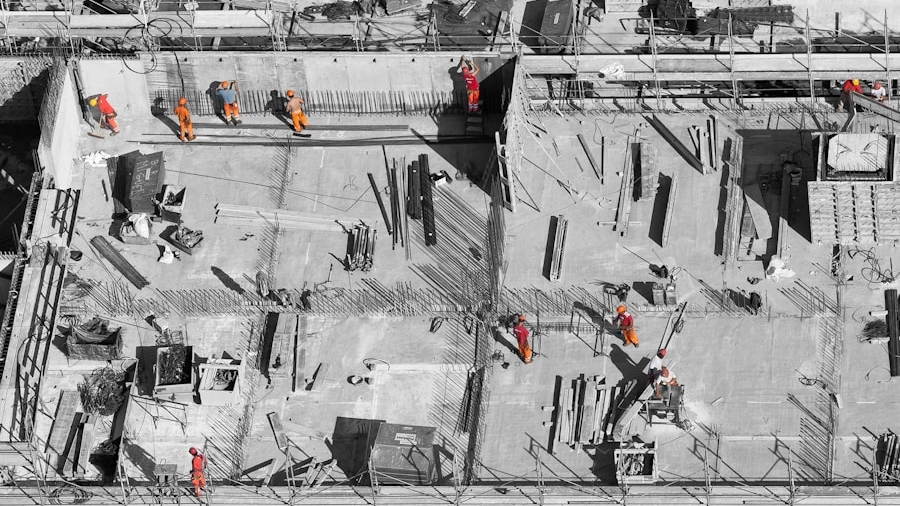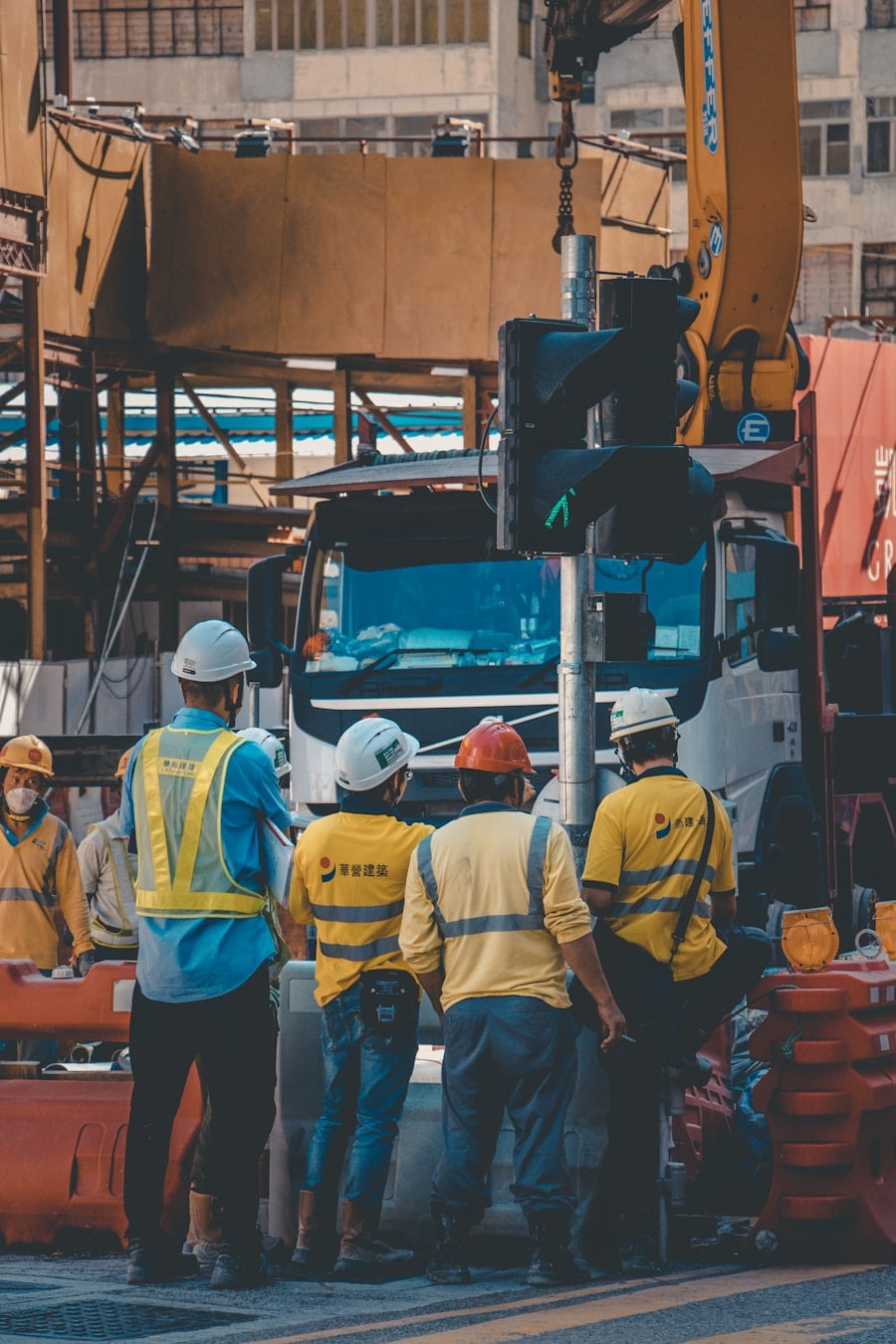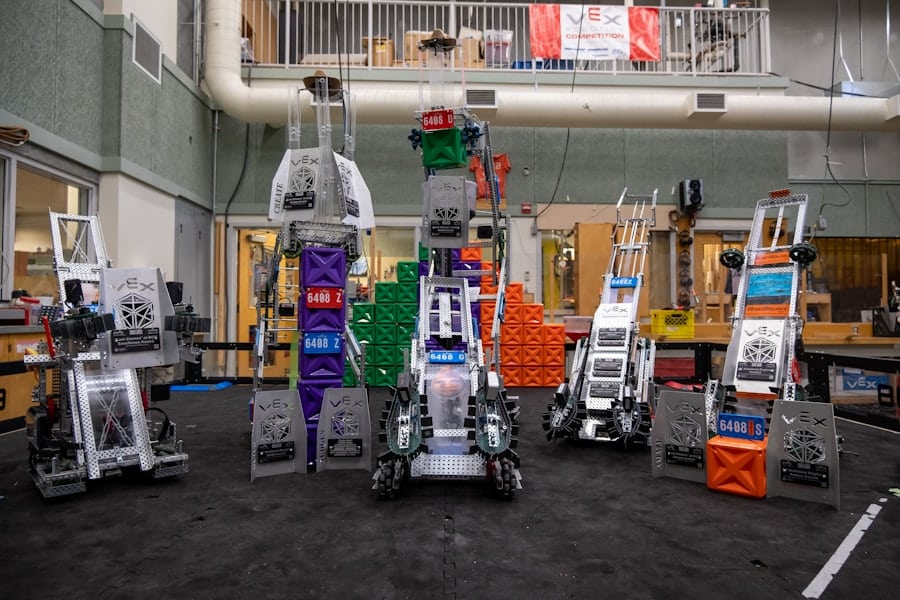The construction industry has long been characterized by its labor-intensive processes and the inherent complexities of managing large-scale projects. As technology continues to evolve, robotics has emerged as a transformative force within this sector. The integration of robotics into construction not only enhances efficiency but also addresses critical challenges such as safety, precision, and quality control.
By automating various tasks, robotics can significantly reduce human error and improve overall project outcomes. This shift towards automation is not merely a trend; it represents a fundamental change in how construction projects are planned, executed, and monitored. Robotics in construction encompasses a wide range of applications, from autonomous machinery that performs heavy lifting to drones that survey job sites.
The advent of these technologies has prompted a reevaluation of traditional construction methodologies. As the industry grapples with labor shortages and increasing demands for faster project delivery, robotics offers a viable solution. The potential for increased productivity and enhanced quality assurance makes robotics an attractive option for construction firms looking to maintain competitiveness in a rapidly evolving market.
Key Takeaways
- Robotics in construction is revolutionizing the industry by automating tasks and improving efficiency.
- Robotics play a crucial role in quality inspections by providing accurate and consistent data.
- Using robotics for construction quality inspections offers advantages such as increased safety, reduced human error, and faster data collection.
- Various types of robotics, including drones, autonomous vehicles, and robotic arms, are used for construction quality inspections.
- Despite the benefits, challenges and limitations of robotics in construction quality inspections include high initial costs and the need for skilled operators.
The Role of Robotics in Quality Inspections
Quality inspections are a critical component of the construction process, ensuring that projects meet specified standards and regulations. Traditionally, these inspections have relied heavily on human expertise, which can be subjective and prone to oversight. Robotics introduces a new paradigm in quality assurance by providing objective, data-driven assessments of construction work.
Equipped with advanced sensors and imaging technologies, robotic systems can detect defects and deviations from design specifications with remarkable accuracy. Drones, for instance, are increasingly being utilized for aerial inspections of construction sites. They can capture high-resolution images and videos, allowing inspectors to assess the condition of structures from angles that would be difficult or dangerous to reach on foot.
Similarly, ground-based robots equipped with laser scanning technology can create detailed 3D models of buildings, enabling precise measurements and comparisons against architectural plans. This level of detail not only enhances the quality of inspections but also facilitates better communication among stakeholders by providing visual evidence of compliance or non-compliance.
Advantages of Using Robotics for Construction Quality Inspections
The advantages of employing robotics for quality inspections in construction are manifold. One of the most significant benefits is the enhancement of accuracy and consistency in inspections. Robots can perform repetitive tasks with a level of precision that far exceeds human capabilities.
For example, when measuring structural elements or assessing surface finishes, robotic systems can eliminate the variability introduced by human judgment, leading to more reliable outcomes. Moreover, the use of robotics can significantly reduce the time required for inspections. Traditional methods often involve lengthy manual checks that can delay project timelines.
This efficiency not only accelerates project delivery but also minimizes downtime, which is particularly valuable in an industry where time is often equated with money. Another advantage is the improved safety profile associated with robotic inspections.
Construction sites are inherently hazardous environments, and sending human inspectors into potentially dangerous situations poses risks. By utilizing drones or remote-controlled robots, companies can conduct thorough inspections without exposing personnel to unsafe conditions. This shift not only protects workers but also aligns with increasing regulatory pressures to prioritize safety on job sites.
Types of Robotics Used in Construction Quality Inspections
A variety of robotic technologies are currently being employed in construction quality inspections, each tailored to specific tasks and environments. Drones are perhaps the most visible example, widely used for aerial surveys and inspections. These unmanned aerial vehicles (UAVs) can cover large areas quickly and provide high-resolution imagery that is invaluable for assessing site conditions and monitoring progress.
Ground-based robots also play a crucial role in quality inspections. These robots can navigate through construction sites and utilize various sensors to gather data on structural integrity and compliance with building codes. For instance, some robots are equipped with ultrasonic sensors that can detect flaws within concrete structures, while others use thermal imaging to identify insulation issues or moisture intrusion.
Another emerging technology is the use of robotic arms for detailed inspections in confined spaces or complex geometries. These robotic arms can be fitted with specialized tools such as cameras or laser scanners to perform intricate assessments that would be challenging for human inspectors. By combining different types of robotics, construction firms can create a comprehensive inspection strategy that leverages the strengths of each technology.
Challenges and Limitations of Robotics in Construction Quality Inspections
Despite the numerous advantages that robotics offer for quality inspections in construction, several challenges and limitations must be addressed. One significant hurdle is the initial investment required to implement robotic systems. The cost of purchasing advanced equipment and training personnel can be substantial, particularly for smaller firms that may already be operating on tight budgets.
This financial barrier can hinder widespread adoption, especially in an industry known for its thin profit margins. Additionally, there are technical challenges associated with integrating robotics into existing workflows. Construction sites are often dynamic environments where conditions can change rapidly due to weather or project modifications.
Ensuring that robotic systems can adapt to these changes while maintaining accuracy and reliability is a complex task that requires ongoing research and development. Moreover, there is a need for regulatory frameworks that address the use of robotics in construction quality inspections. As these technologies become more prevalent, establishing standards for their operation and data collection will be essential to ensure consistency and safety across the industry.
Case Studies of Successful Implementation of Robotics in Construction Quality Inspections
Several case studies illustrate the successful implementation of robotics in construction quality inspections, showcasing the tangible benefits these technologies can provide. One notable example is the use of drones by Skanska, a leading construction firm, during the construction of a large commercial building in New York City. By employing drones for aerial surveys, Skanska was able to monitor progress more effectively and identify potential issues before they escalated into costly problems.
The high-resolution imagery captured by the drones allowed project managers to make informed decisions quickly, ultimately leading to improved project timelines and reduced rework. Another compelling case study involves the use of ground-based robots by Turner Construction Company during the renovation of a historic building. The company deployed robotic systems equipped with laser scanning technology to create detailed 3D models of the existing structure.
This data was invaluable for ensuring that renovations adhered to historical preservation standards while also meeting modern building codes. The precision offered by the robotic inspections minimized discrepancies between the original plans and the actual conditions on-site, resulting in a smoother renovation process. These examples highlight how robotics can enhance quality inspections by providing accurate data and facilitating better communication among project stakeholders.
As more companies recognize the value of these technologies, it is likely that we will see an increase in their adoption across various types of construction projects.
Future Trends and Innovations in Robotics for Construction Quality Inspections
Looking ahead, several trends and innovations are poised to shape the future of robotics in construction quality inspections. One significant trend is the increasing integration of artificial intelligence (AI) with robotic systems. By incorporating AI algorithms into inspection processes, robots can analyze data more effectively and identify patterns that may not be immediately apparent to human inspectors.
This capability could lead to predictive maintenance strategies where potential issues are addressed before they become critical problems. Another promising development is the advancement of collaborative robots, or cobots, designed to work alongside human inspectors rather than replace them. These robots can assist with tasks such as data collection or analysis while allowing human workers to focus on more complex decision-making processes.
This synergy between humans and robots could enhance overall inspection efficiency while maintaining the essential human oversight required for nuanced assessments. Furthermore, as sensor technology continues to evolve, we can expect even greater levels of detail in inspection data. Innovations such as hyperspectral imaging or advanced thermal sensors will enable robots to detect issues at an unprecedented level of granularity.
This enhanced capability will not only improve quality assurance but also contribute to more sustainable construction practices by identifying energy inefficiencies or material defects early in the process.
The Impact of Robotics on the Future of Construction Quality Inspections
The integration of robotics into construction quality inspections represents a significant leap forward for the industry. By enhancing accuracy, efficiency, and safety, these technologies are reshaping how projects are monitored and evaluated. As companies continue to explore innovative applications for robotics, we can anticipate a future where quality inspections are not only more reliable but also more integrated into the overall project lifecycle.
The ongoing evolution of robotics will likely lead to new standards and practices that redefine quality assurance in construction. As stakeholders embrace these advancements, they will be better equipped to meet the challenges posed by an increasingly complex built environment. Ultimately, the impact of robotics on construction quality inspections will extend beyond individual projects; it will contribute to a broader transformation within the industry as it adapts to new technologies and methodologies aimed at improving outcomes for all involved parties.
There is a fascinating article on the best software for fault tree analysis in 2023 that discusses the top tools available for analyzing system failures and improving safety measures. This article complements the discussion on robotics automating construction quality inspections by highlighting the importance of utilizing advanced software for thorough analysis and risk assessment in various industries. Both articles underscore the significance of leveraging technology to enhance efficiency and accuracy in different aspects of business operations.
FAQs
What is robotics in construction quality inspections?
Robotics in construction quality inspections refers to the use of automated machines and technology to perform various inspection tasks on construction sites. This can include tasks such as checking for structural integrity, measuring dimensions, and identifying defects in building materials.
How does robotics automate construction quality inspections?
Robotics automates construction quality inspections by using sensors, cameras, and other technology to gather data and analyze the condition of construction materials and structures. This data is then processed using algorithms to identify any issues or deviations from quality standards.
What are the benefits of using robotics for construction quality inspections?
Some benefits of using robotics for construction quality inspections include increased efficiency, improved accuracy, and the ability to access hard-to-reach or hazardous areas. Robotics can also reduce the risk of human error and provide real-time data for decision-making.
What types of robotics are used in construction quality inspections?
Various types of robotics are used in construction quality inspections, including drones for aerial surveys, autonomous vehicles for material transportation, and robotic arms for precise measurements and inspections. Additionally, there are specialized robots designed for specific tasks such as rebar placement and concrete finishing.
Are there any limitations to using robotics for construction quality inspections?
While robotics can offer many benefits, there are some limitations to consider. These may include the initial cost of implementing robotics, the need for specialized training and maintenance, and the potential for technical malfunctions. Additionally, robotics may not be suitable for all types of construction projects or inspection tasks.



